Perfect as an intensive conditioner for dry and damaged hair, this hair butter recipe is simple to make and nourishing to many hair types.
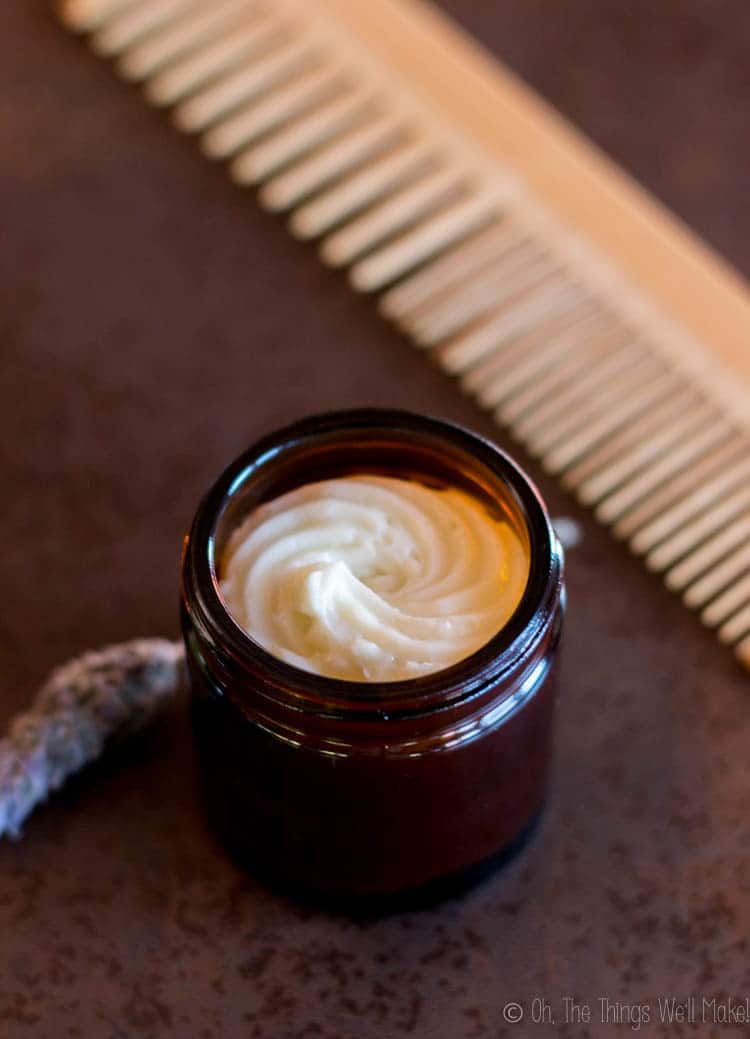
For my last MIY product, I shared with you how to make a homemade whipped body butter. Whipped body butters are a type of moisturizing agent that is great for dry skin, especially in dry areas, because they provide an occlusive barrier to your skin, keeping moisture from leaving it.
Some people have been curious as to if you can use a whipped body butter on your hair, and the answer is yes! That said, it’s better served for hair with a few minor tweaks. I’ll be sharing with you some of those options for making it more hair-friendly today.
How is this hair butter different from a body butter?
Both body butters and hair butters have one main thing in common. They are both oil-based products without any water-based ingredients. Because the product is made up of oils and butters and no water, they also tend to be more expensive to make than a lighter conditioner whose main ingredient is water. The entirety of the product is an active ingredient.
While they are both very similar, there are a few things that we can modify to make a butter more hair friendly.
Choosing hair-friendly oils
The most obvious difference is to use oils that are known to be great for hair. Some of the more common hair oils are argan oil or shea butter, but other oils like avocado oil and illipe butter are also great, nourishing oils for hair. Broccoli seed oil is another lesser known oil that works really well for many hair types. It is often used as a silicone substitute in natural hair care products. As you get to know your hair, you can better judge which oils and butters work best for your hair type. So, if you know that shea butter doesn’t play well with your hair, you can try another butter like illipe butter and see if that works better for you.
I purposely used several oils and butters in this recipe to give you an idea of some great choices for developing your own hair butter, but you don’t need to use all of the oils and butters that I used. You can simplify the recipe and adapt it to what you have on hand, or what works best for your hair. (You may need to adjust the ratios slightly to get a product with the right texture if you are making a lot of changes to the recipe.)
Adding an emulsifier
Another difference between this hair butter and the whipped body butter that I showed you the other day is that I have added an emulsifier to this recipe.
Although there is no water in the recipe, you can still add an emulsifier to change the properties of certain products. In the case of the emulsified sugar scrub recipe, I added the emulsifier so that the sugar scrub wouldn’t feel so greasy on the skin. As you add the scrub to your wet skin and scrub, you are basically forming an emulsion with the water on your skin, converting it into a lotion-like scrub. That leaves you with soft, supple skin after the scrub and a not-so-greasy feeling.
In the case of this hair butter, though, we aren’t using just any emulsifier. We are using an emulsifier that is also a cationic surfactant. Cationic surfactants are great at detangling your hair. They also cling to your hair and reduce the static that can be formed when you damage your hair. (Your hair normally has a slightly negative charge overall, but this increases when you damage your hair.) Cationic surfactants are, in my opinion, the best emulsifiers for making a hair conditioner, and it’s what normally sets a conditioner apart from a normal homemade lotion.
Do you need a preservative in this product?
Technically no.
Because there is no water (nor are there any other aqueous ingredients) in this hair butter, you don’t really need to add a preservative to it. That said, I added one to mine and you may consider adding one to yours too.
Why would you want to add a preservative?
Any time that you are using an oil-based product in a humid environment, or are going to be scooping it up with wet hands, your product can become contaminated with water which can be a source of microbial growth. If you plan on using this on wet hair and think that you’ll be likely scooping the hair butter out of the jar with wet hands, it’s a good idea to use a preservative. The same goes for using it in a really humid environment, like when you are getting out of a steamy shower.
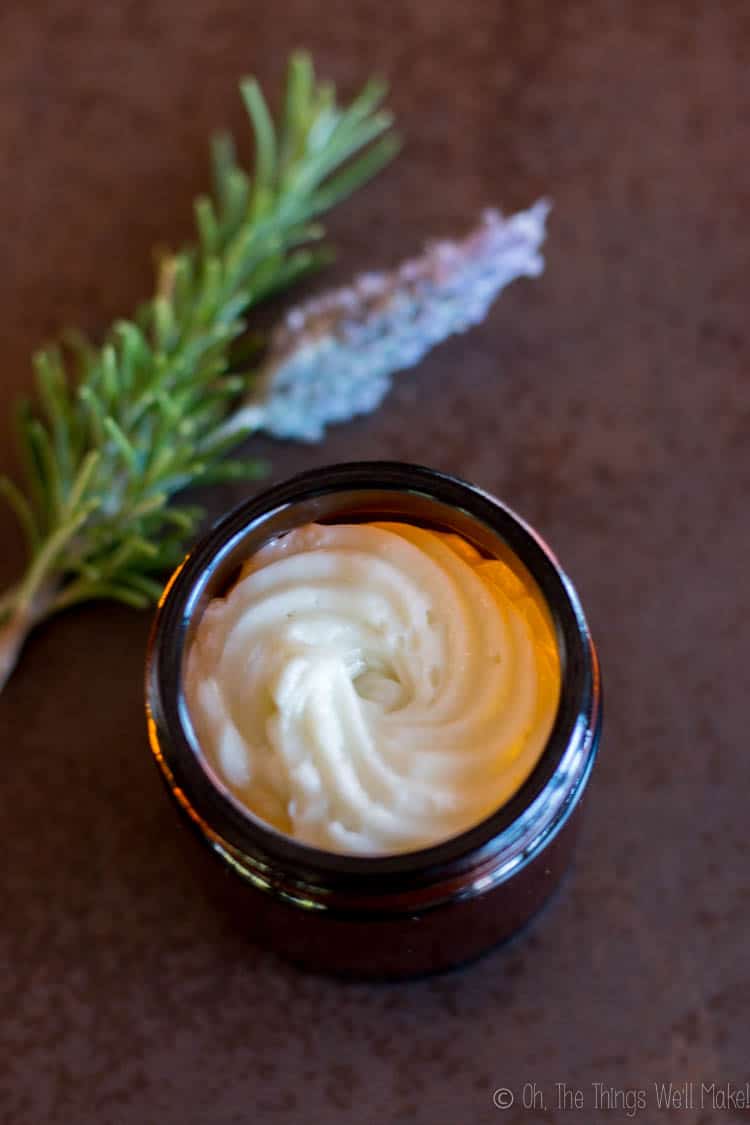
Who benefits most from a hair butter?
Hair butters aren’t normally used as a day-to-day conditioner, but are more often used as an intensive deep conditioning treatment occasionally. That said, it really depends on the type of hair a person has as to how often to use one and/or if it will be beneficial to that person’s hair.
The porosity of the hair
Because hair butters are quite rich and heavy, they tend to work better on hair with high porosity. High porosity hair is hair that more easily absorbs oils and other hair products. People with high porosity hair may even be able to use small amounts of a hair butter more often and as a leave-in product that helps smooth the hair and keep frizz away.
People with low porosity hair will probably find that the hair butter will just sit on top of the hair, weighing it down. They still may be able to use this product occasionally as a deep, wash-out conditioner, but they may not be as happy with the way it makes their hair feel.
If you aren’t sure about the porosity of your hair, there are several methods to help you determine it. Read more about how to determine the porosity of your hair.
Dry hair vs. oily hair
Just as this hair butter works best for people with high porosity hair, it also tends to be favored by people with hair on the dry side. Those with oily hair may feel that a hair butter makes their hair feel greasy.
How to use a hair butter
Depending on your hair type, there are several ways that you can use this hair butter on your hair.
As a deep conditioner
As an occasional deep conditioner, you can use this hair butter in place of your normal conditioner. Scoop some out and apply it to either wet or dry hair and allow it to stay on your hair for several minutes. I prefer to use it before shampooing, as I use quite a bit and am not able to rinse it out thoroughly afterward. Some people, though, prefer to shampoo first and use this as a rinse out conditioner afterward. Again, it really depends on your hair type!
As a sort of hot-oil treatment
Perhaps this will age me, but I remember being a young pre-teen/teenager and following the advice in Teen Magazine for how to keep myself looking my best. One of my favorite hair memories was when I went to a Monkees concert (1986-ish?) after having made big 80’s hair thanks to wrapping strands of it around the plastic adapters used in the center of the 45RPM (smaller) records.
Another thing I learned, though, was how to do a hot-oil treatment. At the time, I’d occasionally sit in a bubble bath with my hair wrapped up in a towel with VO5 hot oil treatment on my hair. (I see that it’s still around. 🙂 ) I never really thought it helped my hair much, and often left my hair feeling greasy, but I continued because Teen Magazine always knew best. 😉
Anyway, sorry for getting off topic…
The idea is that by heating the oil, it will deeper penetrate the hair. These days, rather than heat oil and run it through my hair, I like to scoop out some hair butter and comb it through my hair. I then do a sauna session with it. (I bought my husband an infrared sauna similar to this one for his birthday last year. It’s always a good idea to buy gifts that are just as beneficial to you. Am I right? 😉 )
If you don’t have a sauna, you can carefully blast some warm heat from your hair dryer onto your coated hair. (Don’t go crazy with the super-hot setting. You can also diffuse the heat slightly by wrapping your hair in a thin towel before blasting it with hot air.)
After you’ve allowed the oils to penetrate your hair, you then wash your hair with shampoo as usual.
As a leave-in hair smoother
Rather than applying a lot to your hair and rinsing it out, you can use a smaller amount as a way to smooth your hair and keep frizz away. I was actually surprised at how well this works for my slightly dry, curly hair.
When I used to wash my hair more often, my hair felt a lot oilier and I probably wouldn’t have been able to use a hair butter as a leave-in product. These days, though, I don’t wash my hair very often at all, and when I do, I wash it with a lighter shampoo that doesn’t use harsher surfactants like SLS. (I normally wash my hair with my homemade clarifying shampoo around once a week.)
My hair has adjusted, and rather than being on the oily side between washings and needing to wash out excess oils, I actually use the new wash to hydrate my hair again. I find myself adding leave-in conditioners on my hair and even sometimes add some oils, like argan oil, to the tips of my hair to keep them from drying out.
In the same way that you can use a very small amount of oil to smooth out your hair and nourish it, you can also use this hair butter.
To apply it as a leave-in hair smoother, take a small, pea-sized amount of hair butter and rub it between your hands to melt it and spread it out over your hands. You can then rub your hands over your hair, concentrating on the areas near the tips of your hair to keep your scalp from looking greasy.
The hair butter should help shape your strands, reduce frizz, add shine, and help nourish your hair, all at the same time.
If you have oily or non-porous hair, though, you’ll probably find that the hair butter makes your hair look heavy and/or greasy.
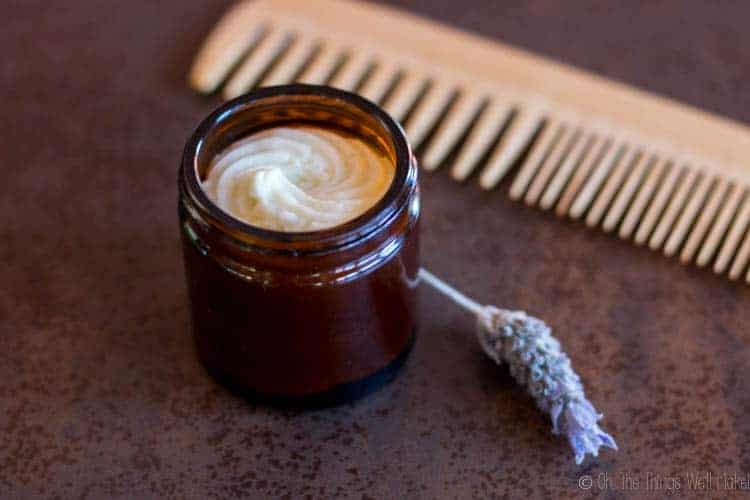
How to make hair butter
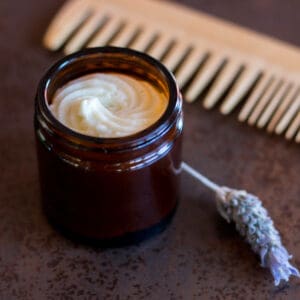
Hair butter recipe
Materials
- 25 g shea butter
- 20 g illipe butter
- 7 g BTMS or other cationic surfactant
- 5 g broccoli seed oil
- 5 g squalane
- 20 g aloe oil I make my own aloe oil.
- 5 g babasu oil
- 5 g argan oil
- 5 g avocado oil
- 1 g essential oils I used a mix of lavender and rosemary.
- 1 g vitamin E
- 1 g natural preservative I used Euxyl K903.
Instructions
- Melt the shea butter and illipe butter with the BTMS over a double boiler.
- Once melted, remove from heat. Add in the carrier oils (the squalane, aloe oil, argan oil, and avocado oil). Stir until combined.
- Place the mixture in the freezer to cool it rapidly. (This is to keep the butters from getting grainy in texture.)
- After a few minutes, remove the butter from the freezer, and scrape down the sides of a bowl with a spatula. Stir the ingredients. Place the mixture back in the freezer.
- Once the temperature has reduced to below 100ºF/40ºC, add in the rest of the ingredients (the vitamin E, essential oils, and preservative). Combine all ingredients well.
- Place the mixture in the freezer again for another few minutes.
- After a few minutes have passed, remove it from the freezer and use a spatula to scrape down the sides of the bowl again. Mix everything together and you can now begin to whip up the mixture with an electric beater.
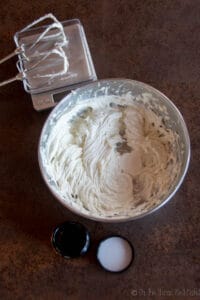
- Continue to cycle between adding the mixture to the freezer and taking it out to whip it until the butter holds its shape.
- Once you’ve gotten to a whipped, solid texture, you can transfer your mixture to glass jars for storage.
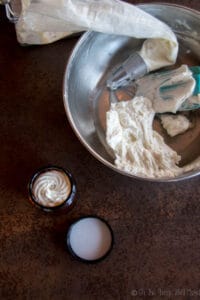
 Español
Español
 Chicken Mulligatawny Soup Recipe (In a Pressure Cooker)
Chicken Mulligatawny Soup Recipe (In a Pressure Cooker)
Jacquie
Hi Tracy, thank you for a wonderful post and for sharing such great tips. I really enjoyed it and look forward to making this recipe.
However, may I ask: if I’m making a hair butter and want to use aloe vera as one of the ingredients, and I use the actual plant to scoop out the aloe, blend it and pour it into my butter, will my butter, then, require a preservative?
Thank you!
Tracy Ariza, DDS
Hi Jacquie,
Yes! Aloe is water-based, and it’s actually notoriously difficult to preserve. So, yes, you’d definitely need a preservative!
The other issue is that you’d also need to emulsify everything together. I just posted recipes for emulsified body butters that give better information about formulating a butter with water-based ingredients. Since this includes BTMS, you could use that as the emulsifier and it would add its conditioning properties.
I have more information about working with preservatives and emulsifiers in my guide to natural preservatives and guide to natural emulsifiers.
Sumayah Paris
Do I have to use the emulsifier. How long will it last because I’m planning on selling hair butter
Tracy Ariza, DDS
The BTMS adds conditioning properties to the butter. While you could make it without it, it will be lacking that sensation of “conditioning” properties.
The shelf life will depend on the ingredients you are using (how fresh they are, etc.). To determine the shelf life, take a look at the “best before” dates of your oils and butters. The product with the shortest shelf life is the one that you should use as a guide to estimate the shelf life of your finished product.
Because it’s an oil-based product, the preservative is there as a precaution only. (If people use the product with wet hands, they introduce water into the product that could contaminate it.)
sakib ahmed
dear,,,,
please tell me how much preservative can i use for 2-3 year lasting this product for commercial
Tracy Ariza, DDS
Hello,
In order to preserve something that long, you should use stronger preservatives than the more natural ones that I use.
You’d also have to invest in microbial testing to ensure that your product keeps as long as you need.
I don’t do commercial production, so I can’t really help with that. You’d need to check how to legally do it in your country.
Stephanie
Hi Tracy, thanks for your recipes and detailed notes, it’s very well written and informative. Is this formula considered anhydrous? I don’t see where water is used but the preservative (Euxyl K903 was used. Is it because of the aloe? I would have thought that drying it as you describe in a companion article would eliminate the water content. Thank you!
Tracy Ariza, DDS
Yes! It’s anhydrous.
Normally, I write about why I add it, but perhaps I didn’t this time. (Will add it when I update the post).
I generally add a preservative to anhydrous products that I think people will be using with wet hands. Wet hands can contaminate the product and allow for mold growth.
Tracy Ariza, DDS
As long as you’re careful when using it, there’s no need to add it!
It’s more for gifting or selling!
Sal
Hi Tracy, thank you for this recipe, i have a question, i made my butter as 50/50 ratio with oil after whipping it came out just a little bit runny, so is it ok if i melt it again and add more butter???? It wont be a problem because i already whip it???? Thnk u
Tracy Ariza, DDS
Hi Sal,
Yes, it should be OK, but you’ll have to whip it again afterward if you want to achieve a softer, whipped texture.
Mercy
Hi Tracy , you said no water added to the mixture .. but when you put the mixture in the freezer, it becomes wet ? Does it really matter or not … does it mean I have to add a preservative to it ?
Tracy Ariza, DDS
Hello Mercy,
I’m not sure why you say it will get wet in the freezer. The reason for putting it in the freezer is to chill it quickly to avoid graininess. As long as you don’t add water to it, there should be no reason for it to get wet and need a preservative.